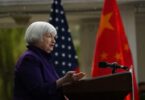Cuba is suffering from longer droughts, warmer waters, more intense storms, and higher sea levels because of climate change. The Cubans used to eat less because of low crop yield over the past years, while people are leaving the island due to a shortage of food grains.
Agriculture has long been a relative bright spot in Cuba’s struggling economy. The socialist government has had a relatively liberal hand with food producers, allowing them to pursue their economic interests more openly than others in Cuba. Although Cuba has ample sun, water, and fertile soil, however, climate change has badly reduced the soil productivity to nearly a quarter of the normal output and farmers are unable to get rewards for their months-long labor in the fields. According to a study, climate change has cost Cuba $65.85 billion in gross domestic product between 1990 and 2014 alone, 9% of its total GDP, while the recent upturn in global warming has increased this damage multifold.
Meanwhile, the COVID-19 pandemic smashed the Cuban economy by 10.9% in 2020 which slightly recovered in the last year, however, the war in Ukraine along with the global energy crisis further back slid Hawana’s economy in 2022. The recent manmade crises worsened the climate change effects already in making in the entire Caribbean region and pushed millions of Cubans out of essential food commodities, lighting, and kitchen heating ahead of cold winter on the Island. Due to the tough economic situation and poor living conditions in the country, hundreds of thousands of people migrated to other countries while over 221,000 Cubans reached the US-Mexico border to enter America in the current year, which is a 471% increase from the year before.
Historically, the Cuban crisis has largely been driven by a complex mix of domestic mismanagement, a weak economy hit by global warming, and current-day upheavals in the world along with Havana’s relations with Washington and other western capitals. The decades-long US sanctions, trade, and travel embargo agaisnt Cuba also played a pivotal role in scrambling Cuba’s industrial growth after the American government banned US firms and their subsidiaries abroad from dealing with Cuban enterprises. The European banks and corporations also stopped their business with Cuban nationals, firms, and entities doing business in Cuba.
Apparently, the current state of affairs had been in making over the past decades and it is an outcome of the global rivalry between capitalism and socialism. Castro-led and Soviet-exported socialism had ever added to the social and economic woes of the poor Cubans, who became prey to Castro’s one nation one-party system. Being in the heart of the North Atlantic region, Havana had been a center of conspiracies, secret war, and espionage during the cold war, while the fight between the two beasts seriously hampered the Cuban economy, especially in the post-Soviet era. Presently, Castro’s successors are battling a western salient war that doubled the impact of natural disasters and global warming many folds. Thousands of protests had been organized by the Cubans to sensitize the ruling elite about poor living conditions, however public protests prompted further suppression by the authorities in the shape of a curb on civil liberties, the internet, and media. Apparently, the unending tussle between socialism and exporters of democracy had ruined the lives of Cubanos, and a public exodus is at its peak to get rid of all woes, hence the time is not far when Cuba would be a state without a nation.






